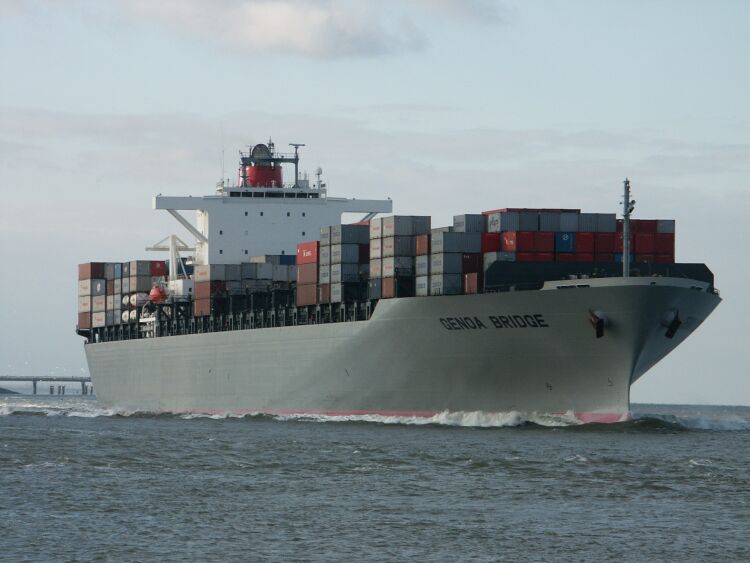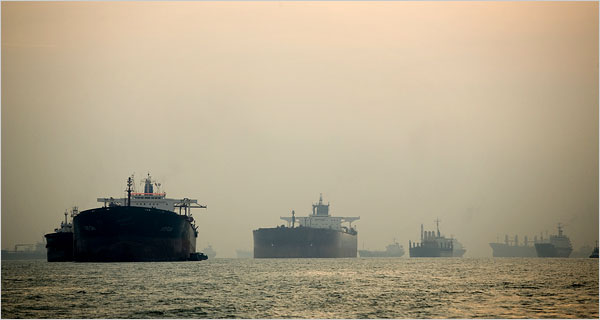
Waiting game: Tankers moored off Devon waiting for oil prices to rise even further
Last week it was revealed that 54 oil tankers are anchored off the coast of Britain, refusing to unload their fuel until prices have risen.
But that is not the only scandal in the shipping world. Today award-winning science writer Fred Pearce – environmental consultant to New Scientist and author of Confessions Of An Eco Sinner – reveals that the super-ships that keep the West in everything from Christmas gifts to computers pump out killer chemicals linked to thousands of deaths because of the filthy fuel they use.
We’ve all noticed it. The filthy black smoke kicked out by funnels on cross-Channel ferries, cruise liners, container ships, oil tankers and even tugboats.
It looks foul, and leaves a brown haze across ports and shipping lanes. But what hasn’t been clear until now is that it is also a major killer, probably causing thousands of deaths in Britain alone.
As ships get bigger, the pollution is getting worse. The most staggering statistic of all is that just 16 of the world’s largest ships can produce as much lung-clogging sulphur pollution as all the world’s cars.
Because of their colossal engines, each as heavy as a small ship, these super-vessels use as much fuel as small power stations.
But, unlike power stations or cars, they can burn the cheapest, filthiest, high-sulphur fuel: the thick residues left behind in refineries after the lighter liquids have been taken. The stuff nobody on land is allowed to use.
Read moreHow only 16 ships create as much pollution as all the cars in the world

